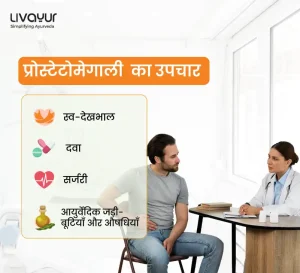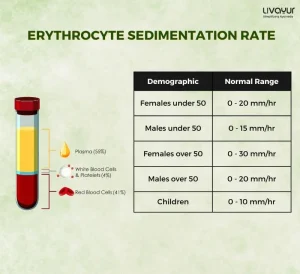This article has been reviewed by experts

According to Ayurveda, when Vata Dosha is imbalanced, it affects Mamsa and Rakta Dhatu, leading to an abnormal growth in body tissues known as Granthi, or what modern medicine calls lipoma. There are six types of Granthi: Vataja, Pittaja, Kaphaja, Raktaj, Mamsaja, and Medoja. According to Acharya Charaka, the capsule of Granthi should be removed along with the Granthi itself. Sushruta outlined different treatments based on the type of Granthi, such as leech application for Pittaja and excision for Kapha predominant. Sushruta considered Granthi a surgical disease requiring excision, especially for Medoja Granthi, which is fat predominant, with total excision being the preferred treatment. In this article, we will take a deep dive into this medical condition, and what Ayurveda has to say about it.
What is Lipoma?
Lipomas are fatty benign tumours that develop beneath the skin. They are not cancerous and affect one out of every ten people. Lipomas can develop at any age, but they are most common in people aged 40 to 60.
Lipomas are small, soft bumps that appear beneath the skin. Sometimes a person has only one, and other times they have a number of them. They are usually quite small, about 2 centimetres or less, but they can occasionally grow larger. When they grow to be larger than 5 centimetres in diameter, they are referred to as giant lipomas. Lipomas can appear anywhere on the body, but they are most commonly found in the abdomen, neck, and shoulders.
When a lipoma is touched, it feels squishy and rubbery. They usually don’t hurt, but they can be a little sore or painful at times. Usually, nothing needs to be done about them, but if they start bothering people or don’t look nice, they can be removed. [2]
Treatment is usually not necessary for lipomas, but they can be removed if they are causing discomfort to patients or if they are unsightly. There are a few different ways to remove lipomas, including surgery, liposuction, and laser treatment.
Lipomas are usually harmless fatty lumps that grow under the skin. However, there are some rare disorders and unusual types of lipomas that can sometimes occur. [1]
What are the Causes of Lipoma?
Although the exact cause of lipomas is unknown, a number of factors may increase the risk of developing them. These might include:
- Trauma
A medical study has shown a possible connection between lipoma and trauma. The study conducted showed that there may be a link between prior blunt soft tissue trauma at the tumour site and the formation of lipomas, which have been called post-traumatic lipomas or pseudolipomas. In some cases, lipomas can also develop as a result of adipose tissue prolapse after blunt soft tissue trauma. [1]
- Adipose Tissue
Studies have shown that there could be a possible connection between adipose tissue and lipoma. A study conducted in Germany showed that adipose tissue had a direct impact on that area of soft tissue. The study samples were subjected to collagenase digestion, a process that breaks down tissue components, followed by separation and expansion of stromal cells. Interestingly, the results from this investigation may provide insights into the potential mechanisms that differentiate lipomas from regular adipose tissue. [1]
- Genetics
Lipomas are benign fatty tumours, as we already know. A few of the possible causes have already been mentioned, but lipoma can also be caused by genetic changes in some cases. These genetic changes may result in increased adipogenesis and a normal rate of adipocyte apoptosis, allowing lipomas to grow.
A study was conducted, and the conclusion that genetics and lipoma are related was reached. A study of lipoma patients discovered that cytogenetic abnormalities involving HMGA2 gene rearrangements (truncation or fusion) occur in 55%-75% of solitary lipomas. When compared to normal fat tissue, lipoma tissue showed increased adipogenesis and a normal rate of adipocyte apoptosis. [3]
- High Level of Blood Sugar
A study comparing individuals with lipoma to healthy individuals found that those affected by lipoma had higher levels of cholesterol, triglycerides, and blood sugar. This suggests that people with high levels of triglycerides and cholesterol, as well as those with high blood sugar, may be more vulnerable to developing lipoma. The study thus proves that there could be a direct relationship between the rise in fat and blood sugar levels and the emergence of lipoma. [4]
- High Cholesterol
High cholesterol, also known as hyperlipidemia, is a medical condition characterised by an abnormally high level of fats, or lipids, in the blood. Studies have shown that lipomas are more common in people with high cholesterol than in people with normal cholesterol levels. [5]
- Diabetes Mellitus
Diabetes mellitus is a chronic disease characterised by abnormally high blood sugar (or glucose) levels caused by insufficient insulin production by the pancreas. Diabetes has been linked to other diseases that cause lipomas, such as Madelung’s disease, according to research. [5]
- Additional Risk Factors
Other risk factors, such as age and gender, can increase a person’s chances of developing lipomas in addition to medical conditions and genetics. Lipomas are most common between the ages of 40 and 60, and men are slightly more likely than women to develop them. [1]
Conclusion
Lipomas are not cancerous and affect approximately one in every ten people. Lipomas can occur at any age, but they are most common in people between the ages of 40 and 60.
These small, soft lumps under the skin can be single or multiple, and are usually 2 centimetres or less in size. While they are usually painless and soft to the touch, they can be tender or even painful at times. Although treatment is usually unnecessary, removal is an option if discomfort or appearance are issues.
Lipomas can be removed using a variety of techniques, including surgery, liposuction, and laser treatment. While most lipomas are harmless, some rare disorders and uncommon types of lipomas can occur. Trauma, adipose tissue, genetics, high blood sugar levels, high cholesterol, and diabetes mellitus are all possible causes. Other risk factors, such as age and gender, can also play a role in the development of lipomas.
FAQs
What Are Lipomas, and Where Do They Develop?
Lipomas are fatty tumours that form beneath the skin and are not cancerous. They are most commonly found on the trunk, neck, and shoulders, but they can grow anywhere on the body.
Are Lipomas Painful?
Lipomas are usually painless, though patients may experience discomfort if they become tender.
Do Lipomas need Treatment?
Lipomas, in most cases, do not require treatment. However, if they cause pain or are unsightly, they can be removed through surgery, liposuction, or laser treatment.
Who is Most Prone to Developing Lipomas?
Lipomas can occur at any age, but they are most common between the ages of 40 and 60. Men are a little more vulnerable than women.
Disclaimer: The information provided here is for general information and not meant to substitute any medical advice. Please consult your doctor for appropriate medical consultation.
References
- https://www.ncbi.nlm.nih.gov/books/NBK482343/
- https://www.ncbi.nlm.nih.gov/pmc/articles/PMC2687496/
- https://www.biorxiv.org/content/biorxiv/early/2019/03/21/585307.full.pdf
- https://www.semanticscholar.org/paper/The-Effect-of-Obesity-on-the-Presence-of-Sebaceous-Ibrahim-Hussein/d8f3e4f74088f7fa7dd85ad843d77eb915f7249e
- https://www.semanticscholar.org/paper/The-Effect-of-Obesity-on-the-Presence-of-Sebaceous-Ibrahim-Hussein/d8f3e4f74088f7fa7dd85ad843d77eb915f7249e






















